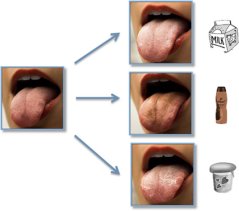
Project
Oral coatings, tastant migration and taste perception
Oral coatings are defined as residuals from foods and beverages that stick onto oral surfaces like the tongue after consumption. Oral coatings have long been hypothesized to significantly influence the perception of taste and mouthfeel attributes. However, a mechanism describing the dynamic formation and clearance of oral coatings is not known. There is only very little information available on the composition and structure of oral coatings despite its influence on sensory perception.

In order to modulate taste perception a tastant molecule must reach the taste bud. Knowledge about the velocity and concentration at which tastants reach the taste buds under different oral coating conditions, i.e. in the presence of a fat deposition on the tongue, is currently lacking. The PhD project studies not only the properties of oral coating, but also investigates the evolution of the food structure during consumption. Two main research lines are followed:
A) The composition of the oral coating is determined to reveal the ingredients mainly responsible for the formation of the coating in liquid and semi-solid model foods. The relationship between the dynamic formation and the removal of oral coating is determined and linked to sensory perception.
B) The effects of well-defined oral coatings varying in macro-nutrient composition on taste perception are investigated. The impact of the oral coating on subsequent perception of basic tastes is determined.
The aims of the studies are to:
- develop and validate experimental techniques to analyze the chemical and physical composition of oral coatings for a broad range of foods
- investigate the relationship between formation and removal dynamics of oral coating and sensory perception
- determine the effects of well-defined oral coatings varying in macro-nutrient composition on taste perception
More research: Food structure, oral processing and sensory perception